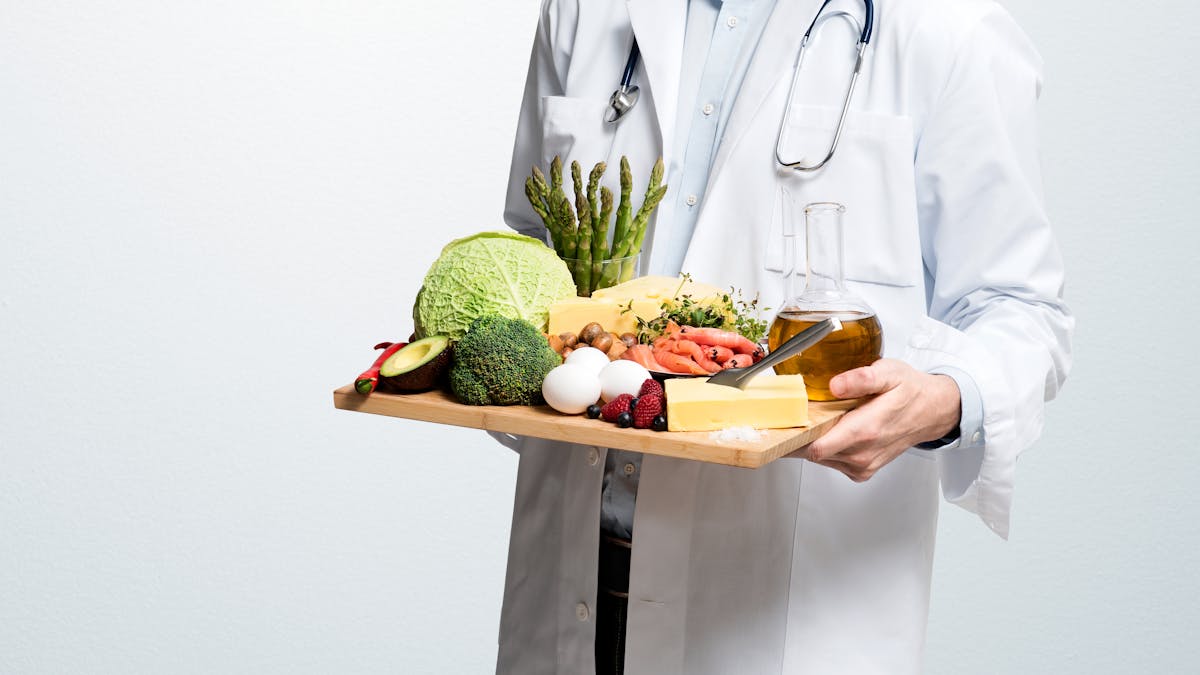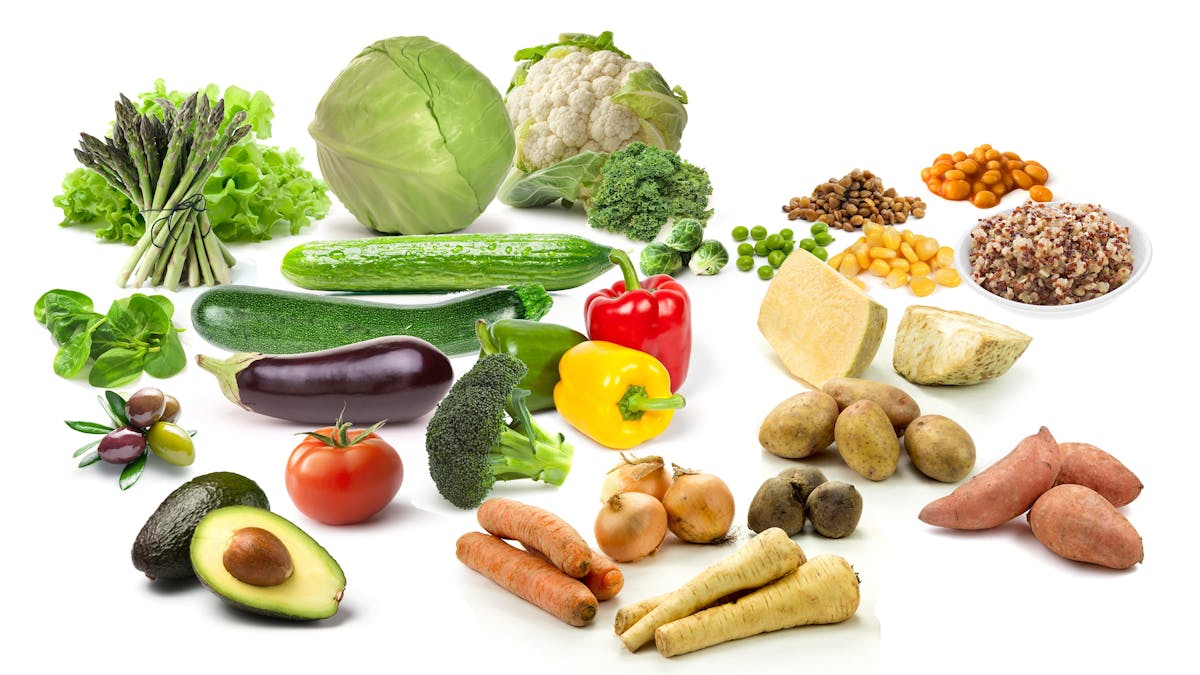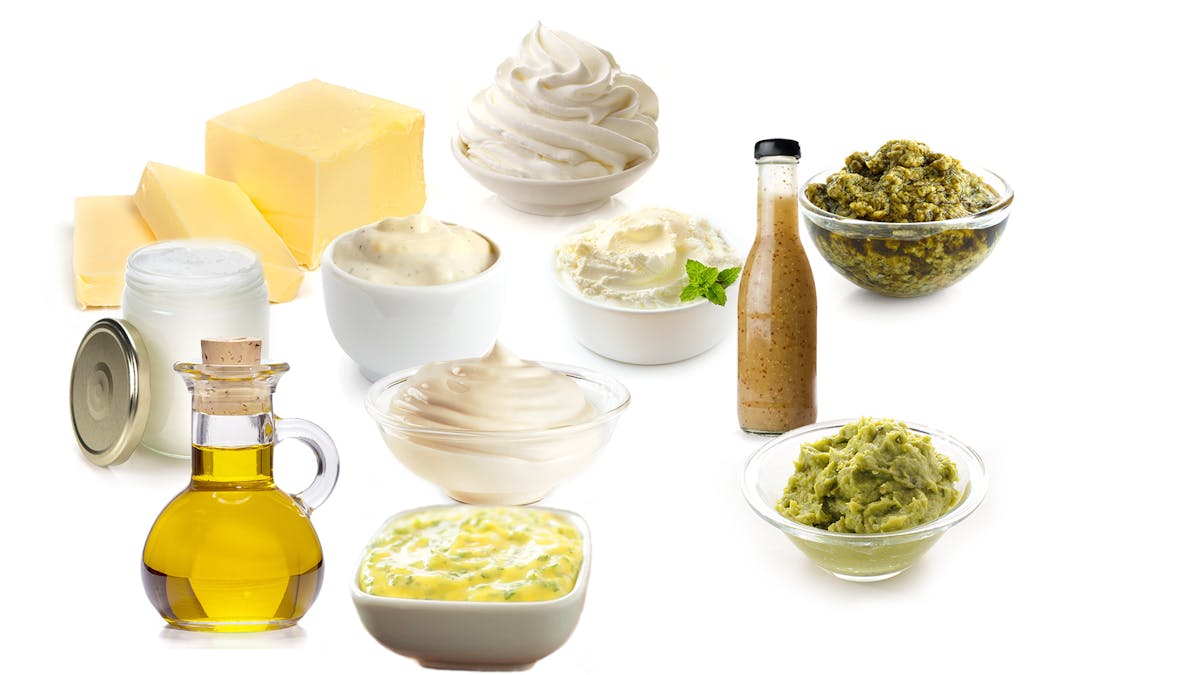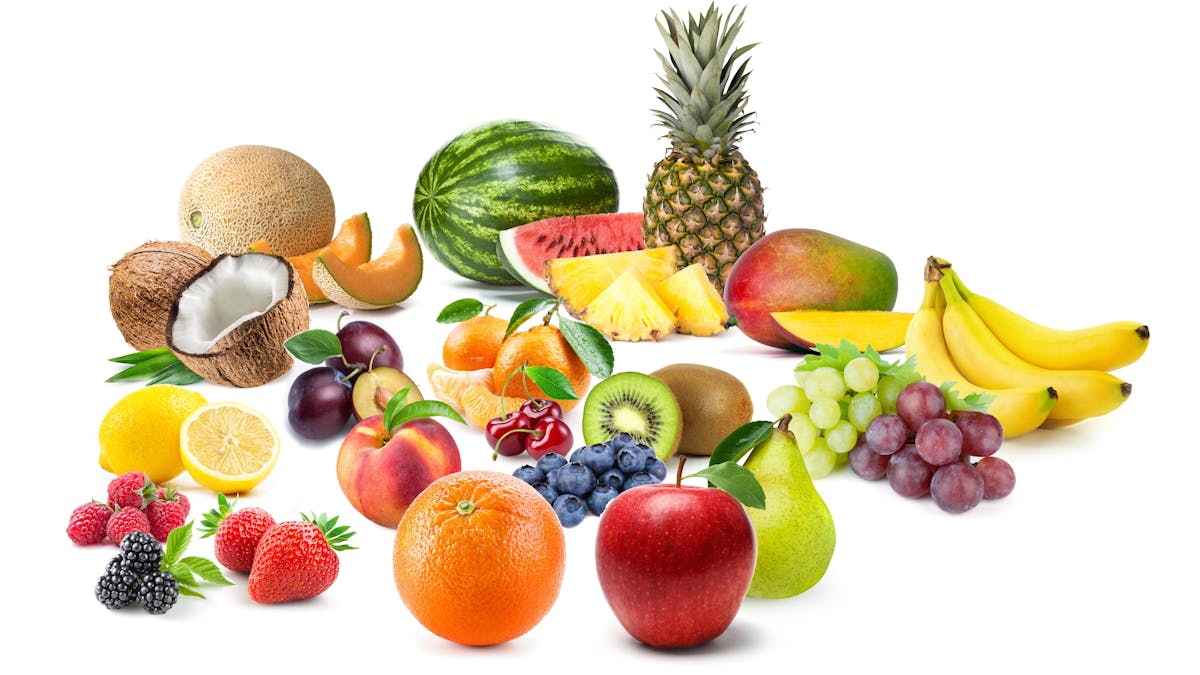The Diet Doctor food policy
Our goal, to empower people everywhere to revolutionize their health, reflects our belief that everyone is unique and may have different needs at different times. We hope you will find this policy helpful when you embark on your journey of finding out what foods work best for you.
Different levels of low carb
Here’s how we define different levels of low carb at Diet Doctor:
- Ketogenic low carb <20 grams net carbs per day.This level of carbohydrates is defined as below 5 energy percent (E%) carbs in our recipes or, if it is a meal, 7 grams of carbs or less. In our ketogenic recipes the amount of carbs per serving is shown in a green ball.
- Moderate low carb 20-50 net grams per day. This level is defined as between 5-10 E% carbs in our recipes and the amount of carbs per serving is shown in a yellow ball.
- Liberal low carb 50-100 net grams per day. This means 10-20 E% carbs in our recipes and the amount of carbs per serving is shown in an orange ball.
Carbohydrates (carbs)
We aim to provide recipes with 0–20 percent of the total energy coming from carbs, mainly from unprocessed whole food sources (e.g. vegetables).
Carbs are not essential to the human body, but if they come from unprocessed food they can contribute nutrients and fiber.
We show net carbs (total carbs minus dietary fiber) because in most people, fiber doesn’t cause a rise in blood glucose or insulin.
Visual guide: Low-carb vegetables – the best and worst
Protein
We recommend meat, poultry, fish, seafood, eggs and/or dairy as the best sources of protein, preferably as unprocessed as possible.
Protein is essential to the human body. Some people fear that amino acids from protein foods can be converted to glucose, thereby raising insulin levels. Although this occurs under experimental conditions, only a small percentage of amino acids are actually converted to glucose.
People with type 2 diabetes usually do well with the adequate levels of protein Diet Doctor recommends, if their diets are also low carb.
At Diet Doctor, we define adequate protein as 1.2 to 2.0 grams per kilo of reference body weight per day, or 15 to 35% of calories. This is the higher end of the US Institutes of Medicine definition, which sets 10% to 35% of calories as the acceptable range for protein intake.
We believe most people would benefit by increasing their protein intake to 1.6 to 2.0 grams per kilo per day, or 25 to 35% of daily calories. Use this simple chart to find out what your minimum daily protein target should be, based on your height.
Minimum daily protein target
| Height | Women | Men |
|---|---|---|
| Under 5’4″ ( < 163 cm) | 90 grams | 105 grams |
| 5’4″ to 5’7″ (163 to 170 cm) | 100 grams | 110 grams |
| 5’8″ to 5’10” (171 to 178 cm) | 110 grams | 120 grams |
| 5’11” to 6’2″ (179 to 188 cm) | 120 grams | 130 grams |
| Over 6’2″ (188 cm +) | 130 grams | 140 grams |
As the chart indicates, you should try to get around 100 grams if you’re a woman and 120 grams if you’re a man of average height and build. Eat more if you’re a man taller than 6 feet (183 cm) or a woman taller than 5’6″ (168 cm) or if you’re very physically active. Eat less if you’re shorter or have a very small frame.
Our complete guide provides much more information about the best high-protein foods to choose for weight loss.
Learn more about our policy on protein
Check out our guide about protein
Our high protein recipes
If a meal (lunch, dinner, or main course) has more than 25 energy percent (E%) protein and includes at least 30 grams (25 grams for breakfasts), we consider it a high protein meal.
For the rest of our recipes, such as desserts and bread, they need to have at least 25 E% protein per serving to be labeled as high protein.
These recipes are marked with a blue outline around the colored carb circle so you can easily spot them.
Learn more about why a higher protein diet could be beneficial for you in our practical guide.
All our high-protein recipes >
Fat
Some dietary fat is essential to the human body.
Minimally processed added fats — such as butter, olive oil, and coconut oil — can be used in amounts needed to add flavor to your meals, and the extra calories may also help with satiety.
Vegetable and seed oils (except olive or coconut oil) are often highly processed and high in omega-6 fats and, therefore, are not something we recommend. Examples of these non-recommended vegetable and seed oils are soybean oil, corn oil, and sunflower oil. In large quantities, omega-6 fats might potentially increase inflammation.
- Visual guide: Low-carb fats and sauces – the best and worst
- Learn more about fat
- Vegetable oils: What we know and what we don’t
Higher-carb ingredients
We see whole foods high in carbs, like potatoes and rice, as something that can be a part of a healthy diet in small to moderate amounts, for some people (especially if they are insulin sensitive).
However, such foods are high in carbs, reduce the effects of a low carb diet, and can be a problem for people who are more insulin-resistant.
Certain seeds, like buckwheat and quinoa, are not something we recommend eating large amounts of, but are theoretically allowed in quantities that keep the recipes within our set limits for carbs. As a general rule, we don’t use them in our keto recipes.
Fruits and berries
We see fruits and berries as nature’s candy and something that can be a part of a healthy diet, in small to moderate amounts, for many people.
We aim to clearly mark recipes with a significant amount of sugar in them as moderate or liberal. This is to make it simple for people sensitive to sugar, such as people with diabetes, to take that into consideration.
As a general rule, we avoid fruit in our keto recipes. Berries are usually a lower-carb option and are used in recipes as long as they stay within our set limits for carbs.
Additionally, although we occasionally use very small amounts of citrus juice in some of our recipes, we ensure that they fall within our established carb limits.
Avocados and olives are technically fatty fruits, although they are often grouped with vegetables. Because they contain very few net carbs, they are included in many of our keto recipes.
Visual guide: Low-carb fruits and berries – the best and worst

Sweeteners
We recommend minimizing the use of non-caloric sweeteners due to the potential for maintaining a preference for sweet tastes or stimulating over-consumption.
Certain sweeteners that we deem potentially less harmful, such as erythritol and stevia, may be used mainly in our dessert and smoothie recipes.
Visual guide: Low-carb sweeteners – the best and worst
Sugar
As a rule, we don’t use white sugar, brown sugar, honey, agave, or other sugars in our recipes because they don’t provide anything necessary for a healthy diet. However, we do use a small amount of sugar (no more than 1 teaspoon for an entire recipe) in a few of our bread recipes in order to activate the yeast.
Sugar raises blood glucose which causes insulin release, and it also has other potentially negative effects (see guide below).
Learn more about sugar and its effects on your health
Gluten
In most of our recipes, we don’t use ingredients known to contain gluten because it can cause problems for people sensitive to it, even in small amounts.
There is an exception for recipes that contain seitan (vital wheat gluten), a plant-based protein source. Any recipes with gluten will be clearly labeled as “This recipe contains gluten.”
We can’t guarantee that some ingredients used in our recipes (ground psyllium husk, oat fiber, and protein powder, etc.) haven’t been contaminated in production.
However, we acknowledge that those who are not sensitive to gluten may be able to add it sparingly in low-carb diets.
Learn more about gluten and wheat
Gluten-free grains
Gluten-free grains, such as oats, are not something we recommend eating a lot of due to their high carb content.
We do think that in small to moderate amounts, they can be part of a healthy diet for insulin-sensitive people. That’s why small amounts of gluten-free grains are allowed in our moderate and liberal low-carb recipes as long as they stay within our set limits for carbs. As a general rule, we don’t use them in our keto recipes.
However, some of our keto and low-carb recipes do contain oat fiber, which does not raise blood sugar and insulin levels because it is not digested and absorbed by your body.
Dairy products
We use full-fat and low-fat dairy products such as butter, heavy whipping cream, yogurt, and cheese in our recipes unless they are marked as dairy-free.
Learn more about dairy on a low-carb diet

Nuts and seeds
Nuts and seeds are used in our recipes, both in their natural form and as flours. They add texture and flavor and can be used as a handy snack.
The amount of carbs in different nuts and seeds varies quite a lot. They may be used in our recipes as long as they stay within our set limits for carbs.
Visual guide: Low-carb nuts – the best and worst
Meat
A healthy low-carb diet can, and often does, contain meat. But, it’s also possible to eat a meat-free low-carb diet.
We recognize that individuals have their own preference, and we aim to support people with guides and recipes whether they choose to eat meat or not.
The Diet Doctor policy on eating meat
Guide to red meat – is it healthy?
How to follow a healthy vegetarian keto diet
Legumes
Some legumes (also referred to as pulses) – such as beans, lentils, peas, and peanuts – are fairly high in carbs but are allowed in our recipes as long as the recipe itself stays within our set limits for carbs.
Legumes have varying amounts of resistant starch, which may have a lowering effect on blood sugar for some people, potentially mitigating the effects of the other carbohydrates somewhat.
Learn more about resistant starch
Soy
Products made from soy, like tofu, can provide a good source of protein for vegetarians and vegans who follow a low-carb diet. However, concerns have been raised about the health effects of soy isoflavones based on animal and test-tube studies.
Although soy doesn’t seem to cause problems for people with normal thyroid function, there’s been conflicting evidence in those with subclinical hypothyroidism (also known as mild thyroid failure).
Soy isoflavones may interfere with thyroid hormone absorption when iodine intake isn’t sufficient.
At this time, some concerns remain about soy consumption in people with thyroid problems, as well as the long-term health effects of consuming ultra-processed soy protein powders and supplements.
Some people have raised concerns that many soy products in the US may contain residues of glyphosate (Roundup), a controversial herbicide used on soy and other crops that requires further study.
For people who want to avoid animal products, the benefits of soy seem to greatly outweigh the risks. Although the potential risk to thyroid function appears very small, those who consume soy on a regular basis may want to consider having their thyroid function monitored periodically and including iodine food sources in their diet.
Guide: How to follow a healthy vegetarian keto diet
Chocolate
Dark chocolate with ≥70% cocoa solids (preferably ≥85%) and sugar-free chocolate may be used in our dessert recipes if they stay within our set limits for carbs. It’s only allowed in desserts and intended for occasional consumption, not in breakfast or snack recipes or in recipes that can be considered everyday foods.
However, unsweetened cocoa powder may be added to coffee or consumed as hot cocoa on a more frequent basis, as it contains a minimal amount of net carbs.
High-oxalate foods
Oxalate is a compound found in many plants that we eat, like vegetables, nuts, and seeds. Foods especially high in oxalate include spinach and other leafy greens, beets, rhubarb, almonds, cocoa, sesame seeds, and sweet potatoes.
The body makes oxalate, too. In most people, roughly half of the oxalate eliminated in urine is produced by the body, and the remainder comes from dietary oxalate.
After being absorbed, oxalate is usually eliminated from the body without any problem. However, in susceptible individuals, it can bind to calcium in the urinary tract and form kidney stones.
Because high amounts of urinary oxalate increase the risk of stone formation, people who are prone to forming calcium oxalate stones may need to avoid high-oxalate foods.
However, there is a lack of convincing evidence that high-oxalate foods are harmful for people without a history of kidney stones. Therefore, we do not recommend that they restrict vegetables, nuts, and other nutritious low-carb foods that are high in oxalate.



